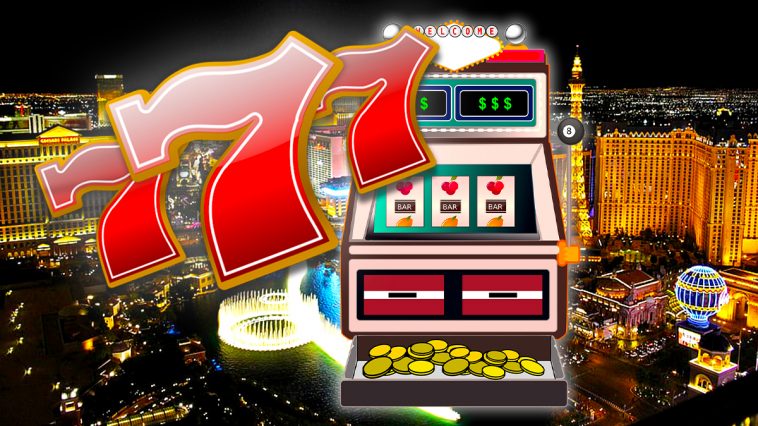Slots players put lots of emphasis on high return to player (RTP). After all, high RTP indicates that you have a stronger chance of winning money in the long run.
But what about your immediate chances of winning? Hit frequency and win frequency are better determinants of short-term odds.
Both terms are often used interchangeably to describe the odds of winning in each round. However, the gaming world might want to make an important distinction between the two.
I’m going to discuss why a distinction is necessary between hit and win frequency. I’ll also cover how you can use these terms to boost your chances of winning.
What Is Hit Frequency?
Hit frequency refers to your odds of winning at least one prize during a spin. It’s expressed as a percentage in the info screen.
Here’s an example:
- A slot shows that the hit frequency is 18%.
- You play 50 spins.
- 50 x 0.18 = 9
- You theoretically stand to win 9 out of the 50 spins.
You arrive at the hit frequency by dividing the total number of winning combinations by the total possible combinations. Luckily, you don’t need to do this math yourself.
Instead, many slots providers do the math and list hit frequency in the info screen/pay table. You simply need to browse the pay table in these instances.
The Value of Understanding Hit Frequency
Slots are the most-volatile games in land-based and real money online casinos. They can deliver huge payouts, but they also put you through long dry spells as well.
A lower hit rate typically means that you’ll deal with more cold streaks. Therefore, you should prepare to wait for payouts and adjust your bankroll management accordingly.
Games that only offer hit rates between 12% and 20% are relatively stingy. Meanwhile, games with hit frequency ranging from 21% to 40% are usually more generous and see you win often.
The Downside to Hit Rate
The drawback to hit frequency is that it doesn’t indicate how much you stand to win on average. It only shows the average number of times where you’ll experience a winning round.
A slot may offer a 35% hit rate but not deliver very much when it does pay out. After all, a hit counts as anything from a one cent win (if possible) to a life-changing prize.
Therefore, the high hit frequency is deceiving in this manner. You might win often with a certain game but still lose money if the payouts aren’t worth much.
What Is Win Frequency?
Again, hit and win frequency are widely considered interchangeable terms for what’s covered above. But win rate should actually be known as something slightly different.
Win frequency is better served to describe how often you win money on each spin. Such a concept is even more helpful when dealing with bankroll management.
Here’s an example:
- You’re betting $1 per round.
- You need to know how often you’ll win more than a dollar.
- The win frequency is 36%, meaning you’ll profit on over one-third of your spins.
36% might sound extremely low for win frequency. But given that slots offer much larger prizes relative to the bet, you can’t expect to profit from too many spins.
The Value of Understanding Win Frequency
Almost every slot produced today offer multiple paylines (or “ways”). These multi-line games feature a phenomenon known as losses disguised as wins (LDWs).
An LDW refers to a payout that’s worth less than your spin cost. It creates the deception that you’ve experienced a winning spin when you’ve ultimately lost money.
Here’s an example:
- You bet $0.50 on a spin.
- You win a $0.10 payout.
- 0.5 – 0.1 = $0.40 loss
Developers design slots to highlight your wins, no matter how big or small. They truly do disguise wins that are really losses through animations and sound effects.
You normally don’t know how often you’ll experience LDWs. But win frequency—as least the version I’ve proposed—would provide an indication.
If win frequency is 36%, you’re either going to completely lose or get an LDW on the remaining 64% of spins. This information is helpful when deciding how often you’ll truly win in each round and not just pick up $0.05 payouts.
The Drawback to Win Rate
The concept of knowing how many profitable spins you’ll experience doesn’t have much downside. But win frequency does fall short in showing how likely you are to earn something back from each spin.
I’d prefer to know how many spins will result in a real payout instead of an LDW. However, it’s also nice to know how frequently you’ll receive any kind of prize.
Only hit frequency shows the rate at which you’ll win per round. Win rate, on the other hand, just shows when you’ll earn back more than the cost of the spin.
Should Casinos & Developers Distinguish Between Win and Hit Frequency?
As it stands, operators delude players into thinking that hit frequency has a major impact on volatility. I’ve seen too many games with a high hit rate and insane volatility, though, to realize that this isn’t true.
Even a slot with a 40% hit rate can have an 8/10 volatility rating. Of course, you might not have any trouble dealing with such volatility.
On the other hand, you might have a small bankroll and want to preserve your funds. High hit frequency means little in this case if it doesn’t produce large-enough payouts.
I feel that win rate is even more important than hit frequency. It ignores LDWs and cuts right to profitable spins.
If I had my way, win frequency would be the more-important concept of the two. As it stands, though, hit frequency is the only concept that currently exists.
Of course, operators would also need to come up with a way to accurately determine profit rates on spins. They could run a long-term simulation to come up with what percentage of spins result in profits.
Here’s an example:
- A developer produces a new slots game.
- They want to know what percentage of rounds will produce a profit.
- The developer runs a simulation involving 10 million spins.
- They determine that the win frequency is 32%.
This is just an example on how developers could come up with a solution for a crucial piece of information that’s sorely lacking.
Many games show the likelihood of you collecting a win. They just don’t have any stat that shows when these wins actually result in profits.
Conclusion
Hit and win frequency will remain interchangeable terms for the foreseeable future. However, I’d still like to see a distinction made between them at some point.
After all, you know that hit frequency indicates the chances of experiencing any sort of win. But exactly how much are you going to win?
Establishing win frequency as the rate that shows how often you’ll profit from spins would help solve this problem. It would also bring more attention to the LDW issue, where players mistakenly think they’ve won money just because lights are flashing and sounds effects are booming.
Michael Stevens
Michael Stevens has been researching and writing topics involving the gambling industry for well over a decade now and is considered an expert on all things casino and sports betting. Michael has been writing for GamblingSites.org since early 2016. …





